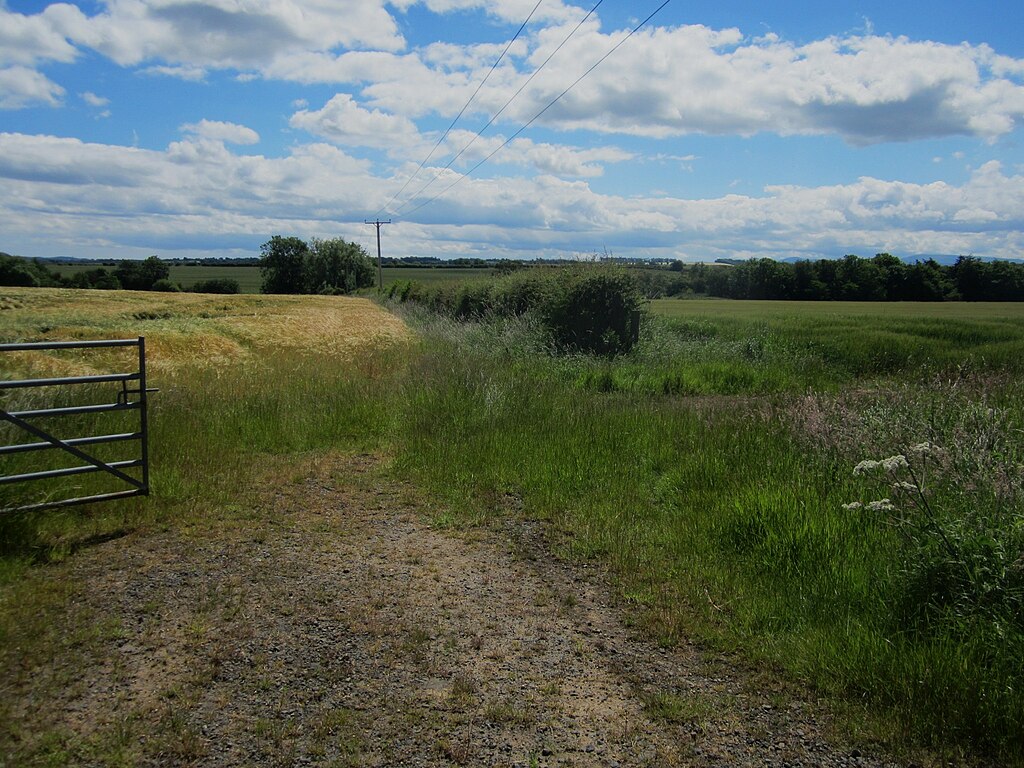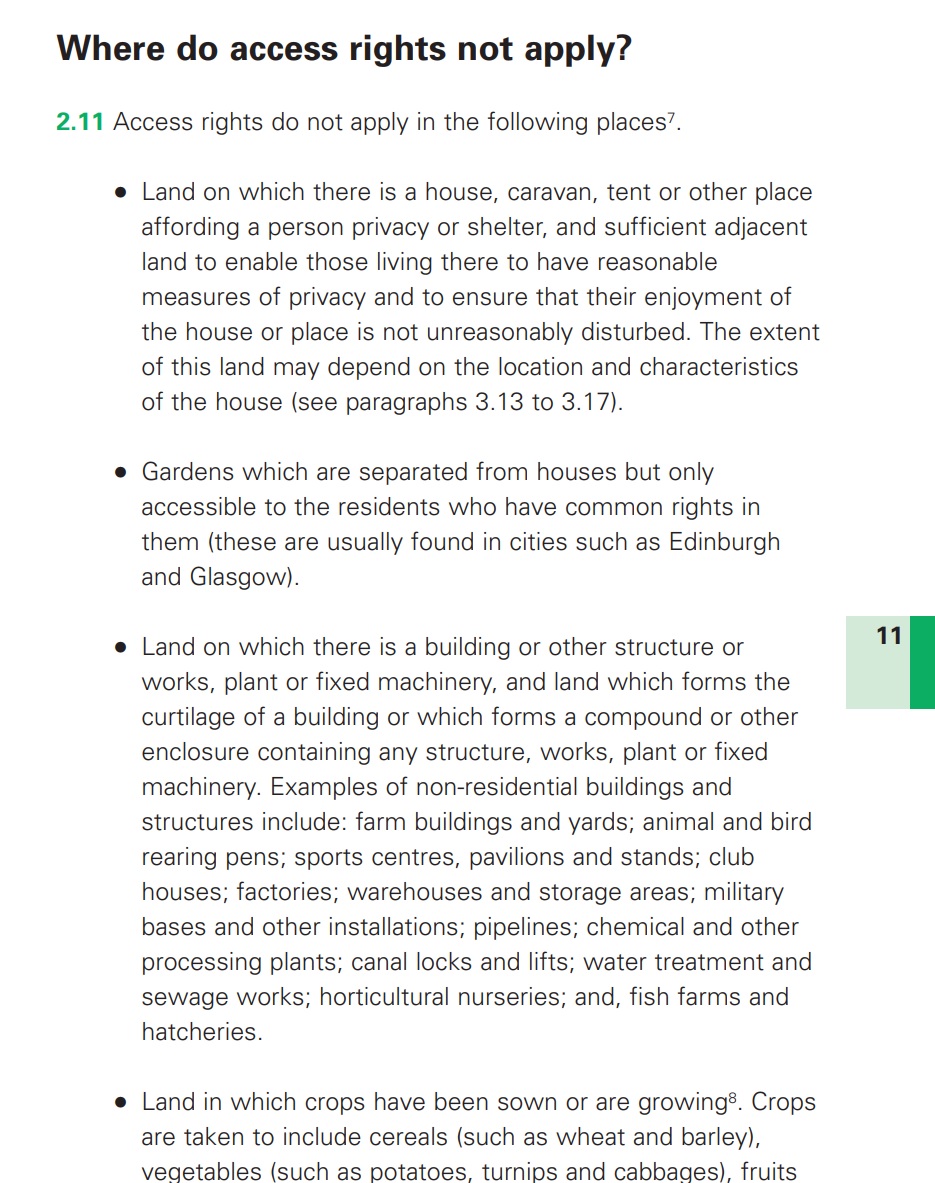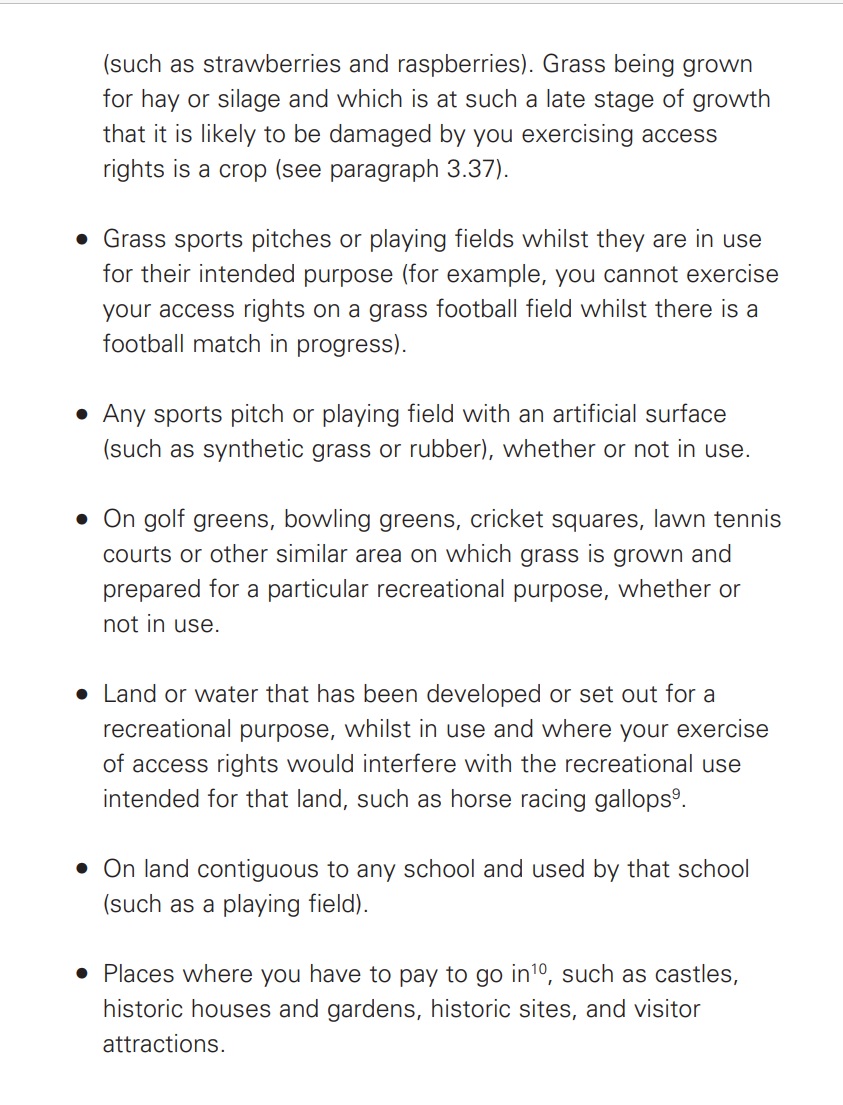
Where to start with the recent Farmers Weekly piece on the right to roam (RTR)? It seems to have no idea what is being proposed and bemoans the loss of opportunities to “monetise partnerships with healthcare providers as solutions to the UK’s health and wellbeing crisis”.
Firstly, the RTR proposals are not an “all-access approach”. They simply mean exclusions should be justified on reasonable grounds not arbitrary whims.
What those are is up to us to democratically decide. You can see below the list of exclusions used in the Scottish model, which Right to Roam are campaigning to adopt in England:


It means the “inner city kids” the author invites for one-off visits to his farm would instead be empowered – yes, have a right – to experience the “spontaneous high” of nature in their own time, on their own terms, at their own discretion, in a way which might actually be… spontaneous.
But it also leaves space for a policy which incorporates habitat protection, excluding access where it is genuinely justified on conservation grounds. As proposed at a recent event held by the British Ecology Society, the answer is likely to be a combination of more access combined with more (targeted) exclusions for areas with sensitive wildlife. In short, expanding access creates more space for justified exclusions.
We should also note that mass exclusion is already the default and it has done absolutely nothing for nature. That’s because its primary drivers include mass habitat loss, pollution, widespread pesticide use and other destructive approaches to land use. Blaming people is a convenient distraction.
Where there are issues with disturbance (especially relating to off-lead dogs) we propose a combination of education, regulation and enforcement which could leave us in a better situation than currently – both for farming and nature. Cultural change is not an impossibility: we just haven’t tried. An intervention on dog ownership is long overdue regardless of access reform, but it will be avoided by politicians unless it can be packaged as part of a broader expansion of rights.
I have explained all these things – and many more of the nuances the author suggests don’t exist – to Farmers Weekly just recently. Yet not one of them made it into the article they published, which instead focused on anonymous scare stories. At this point it’s starting to look like they’re deliberately misinforming their readers.
Indeed, the author appears to have little familiarity with any of the details of what is being proposed for an English Right to Roam – at one point appearing to cite the existing Countryside and Rights of Way (CRoW) Act, introduced 23 years ago, as an example of what is being proposed today. (The CRoW Act is what gave us the 8 per cent of access land which currently exists in England – a good thing, but highly uneven in distribution and remote from most people’s lives, as Right to Roam regularly highlights).
At the end of the piece, we appear to get to the real issue of concern. The author believes that if we simply give people a right to access nature, then landowners won’t be able to monetise selling it, like some kind of agricultural version of Virgin Healthcare Services. In a dystopian phrase, the author complains that a right to roam would “effectively be imposing a compulsory purchase tax of that biophilia value” provided by simply allowing people to exist in nature.

Right to Roam has no objection to access being recognised as a public good as part of broader public payment schemes for agriculture. Indeed, we are pushing for public support for the creation of access infrastructure which might accompany expanded rights of access. It is not reasonable to expect that to just happen by magic and for free.
But in a context where 50 per cent of all land is owned by 1 per cent of people, coupled with England’s long and profoundly unjust history of land ownership, the idea that you can turn the health crises resulting from the dispossession of people from their environment into a revenue stream, charged to the taxpayer through a healthcare provider, is deeply offensive.
So no more lecturing the public on biodiversity threats from the industry most responsible for biodiversity loss, please. And no more patronising stuff about the inner-city kids invited for a one-off trip to your farm. Yes, a right to roam should include the responsibilities of those accessing the land, as it does in Scotland. It will require much better public educational provision on the issues surrounding access, and should include support for farmers and landowners to mitigate any problems and help create new infrastructure. The result can be a much better solution for everyone: the public, farmers, nature and landowners.
With the vast majority of the public now supporting a Scottish-style right to roam in England, it’s time for this conversation to move on from ill-informed scare stories. Let’s talk about how we create new settlement between the public and nature, transforming connection into protection and ultimately, ecological restoration. And let’s talk about how we re-people the countryside again, placing farmers back at the heart of the community – thereby giving them the political voice they need to deliver it.






